Greg Cosell's Super Bowl Review: Inside the play that flipped the Patriots' Super Bowl win
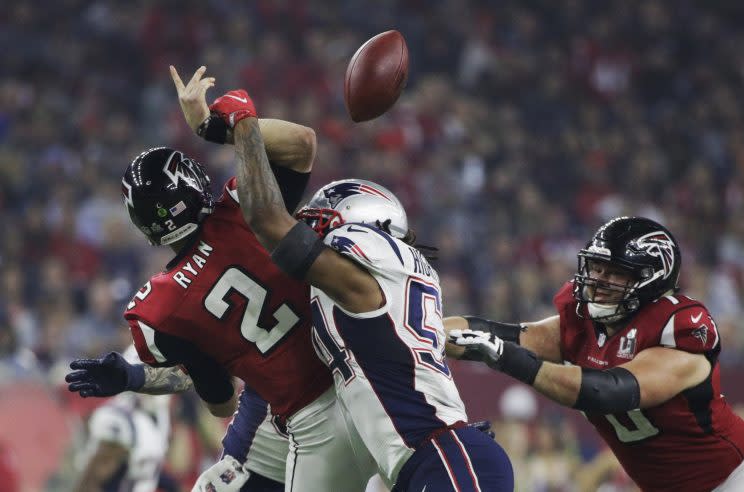
There has been a lot of criticism of Kyle Shanahan, the Atlanta Falcons’ offensive coordinator in Super Bowl LI. One of the plays that has been second-guessed is a pass play when the Falcons could have run it on a third-and-1 in the fourth quarter. That play that resulted in a crucial strip-sack.
What you won’t hear often is the play Shanahan dialed up should have been a huge gain. One key mental bust might have cost the Falcons an enormous play that could have sealed a Super Bowl win.
The Patriots went with “Cover 1,” a man concept, with a double team on Julio Jones. Safety Devin McCourty played inside and over the top of cornerback Eric Rowe, who had Jones. The Patriots had dedicated double teams on Jones often in the second half. That singled up Aldrick Robinson from the inside slot on cornerback Malcolm Butler, and Robinson ran right by Butler on the deep sail route. Robinson was wide open with nobody between him and the end zone (McCourty stepped up to take away Jones), and that’s where Ryan was going with the ball when he was hit by Dont’a Hightower. It’s reminiscent of Von Miller’s sack on Cam Newton, when Newton was trying to throw to a wide-open Devin Funchess deep downfield in Super Bowl 50.
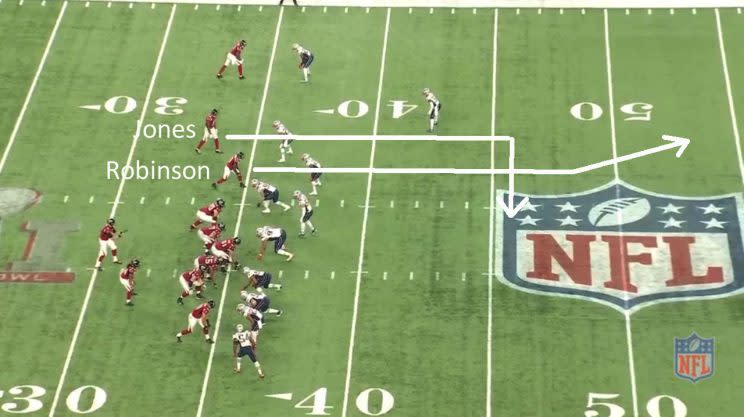

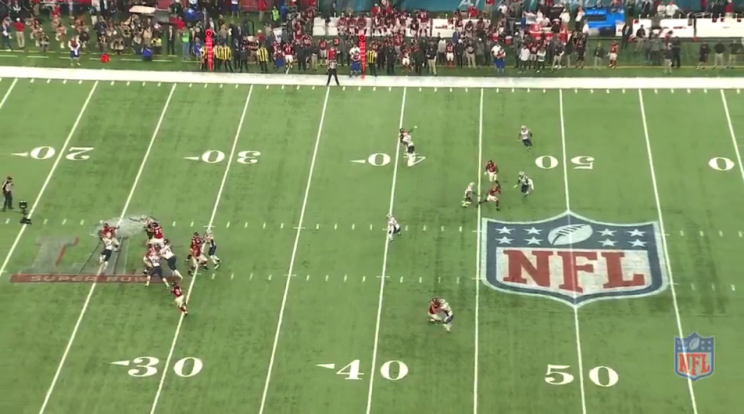
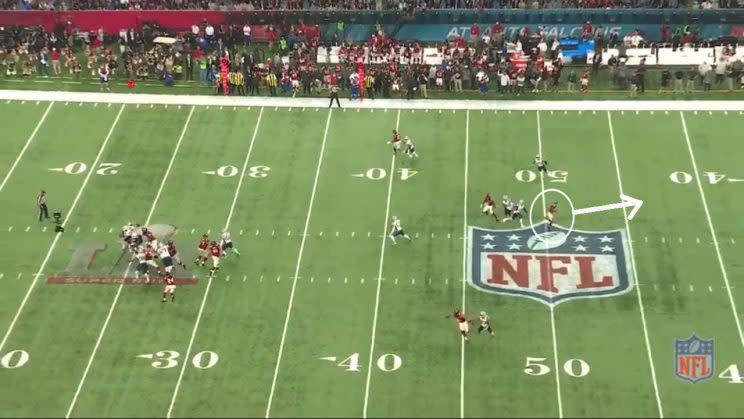
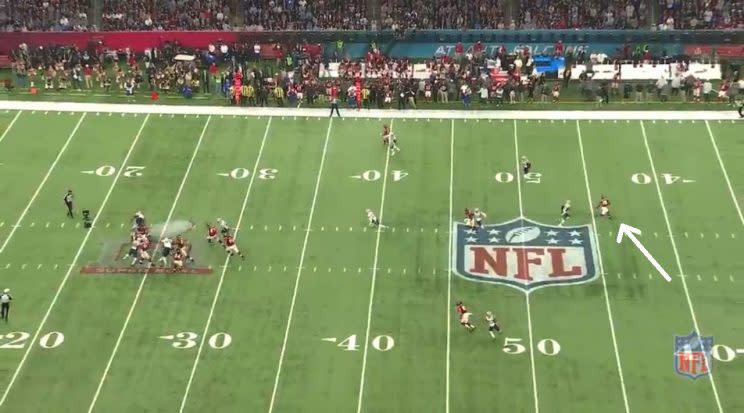
You can see Robinson breaking away on a replay from the television broadcast, and Ryan pulling the trigger on the throw:

Ryan didn’t have a chance to throw it because running back Devonta Freeman never recognized Hightower as a blitzer. Hightower aligned outside of flexed “X iso” tight end Austin Hooper, and Freeman focused inside. Freeman was surprised Hightower rushed and was not in position to pick him up on what should have been an easy blitz pickup. With one more beat, Ryan would have been throwing deep to a wide-open Robinson.
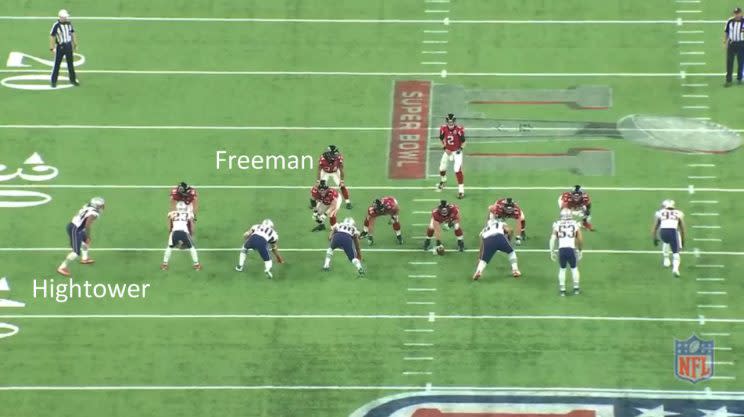

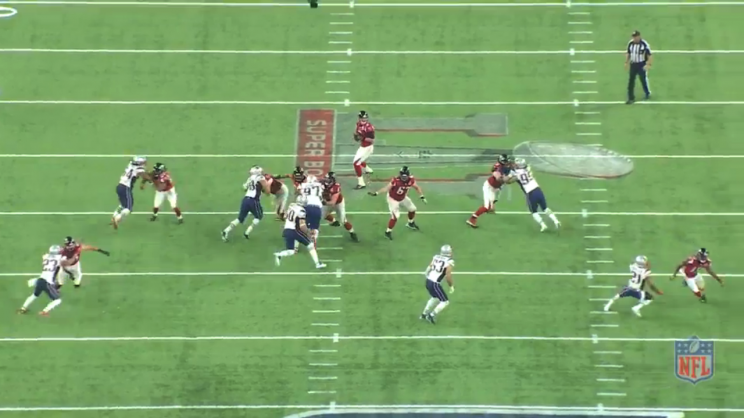


That play led to a quick 25-yard touchdown drive by the Patriots, and they credited that sack from Hightower as being the key play in a big second-half comeback win.
[Read and React Newsletter: Shutdown Corner’s best NFL coverage in your inbox!]
There are a lot of important turning points when a team comes back from a 25-point deficit as the Patriots did. The Patriots had a few key offensive adjustments, and I’ll break those down later in the post. First, let’s look at another crucial two-play sequence for the Falcons’ offense in the fourth quarter, and what happened on those plays.
For all the criticism of Shanahan since Sunday, the Falcons had a great plan. They planned to attack the edge of the Patriots’ defense with run plays, which isn’t not very fast or athletic. They were multiple in personnel packages and formations the first few series, especially using “21” personnel (two backs and one tight end) to feel out how the Patriots would match up. Shanahan did a great job attacking and breaking down the Patriots defense with his personnel packages, formations and concepts in the run and pass games. The Patriots’ defense was on its heels most of the game.
As we know, it didn’t turn out well for Atlanta. The Patriots committed to doubling Jones in the second half. They started to generate a pass rush, using multiple looks up front. And when the Falcons called a familiar play in the fourth quarter from the Patriots’ 22, New England was ready for it. It set off a bad chain reaction for Atlanta.
The Falcons ran a toss sweep left to the wide side (the “field” side, as they were on the right hash mark), just as they did on the first play of the game. Freeman got 37 yards on the first play of the game. The Falcons went back to it after Jones’ 27-yard catch (which was one of the best catches you’ll see). This time on the same run, Patriots cornerback Logan Ryan attacked the line of scrimmage and prevented left tackle Jake Matthews from pulling and blocking McCourty. McCourty filled and made a tackle for a one-yard loss. It’s a great, unrecognized play by Ryan.
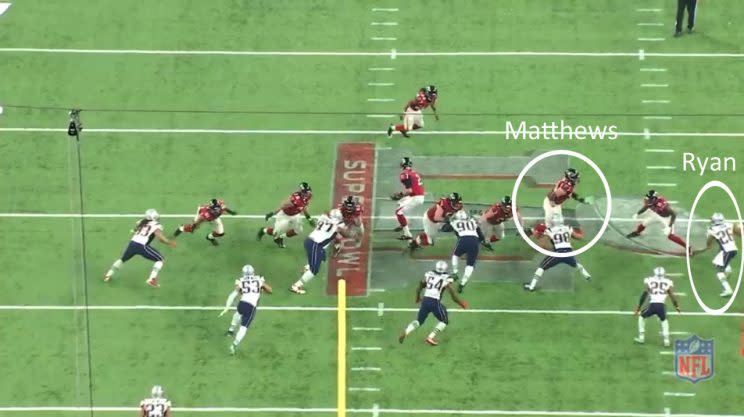

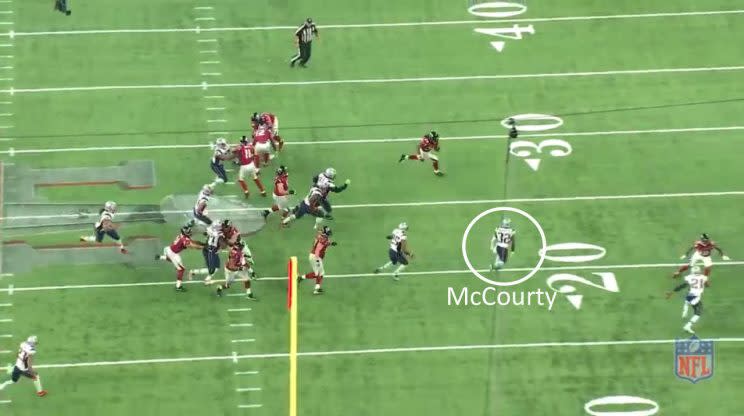

After the Falcons went backward on that play, they called a pass play on second-and-11. There was another dedicated double team on Jones. Trey Flowers (98) got quick inside pressure against center Alex Mack, and Ryan didn’t have time to comfortably get through his progression. Ryan was sacked for a 12-yard loss, a play that was huge in the Patriots’ comeback.
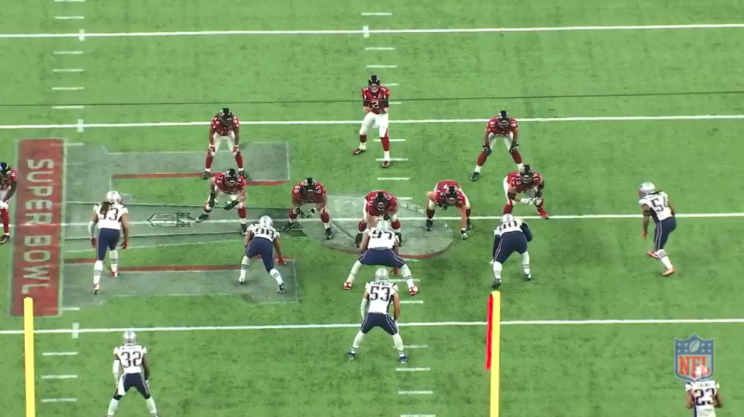
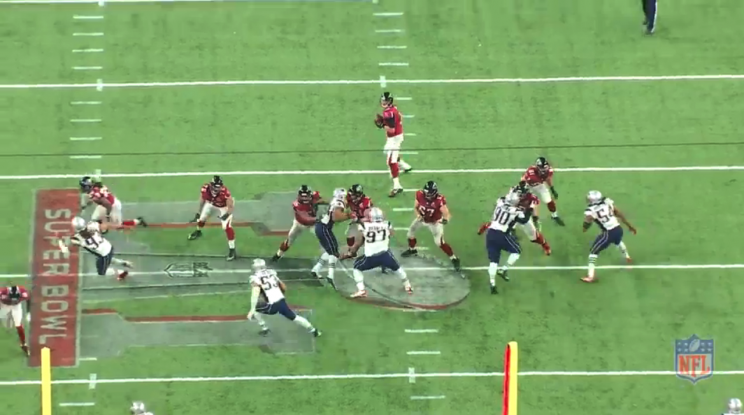

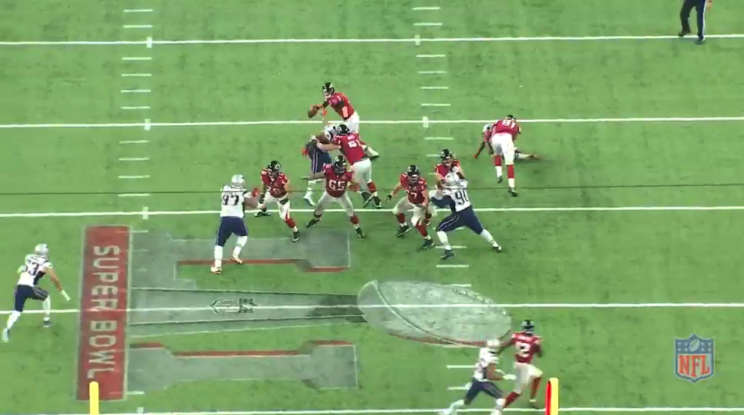
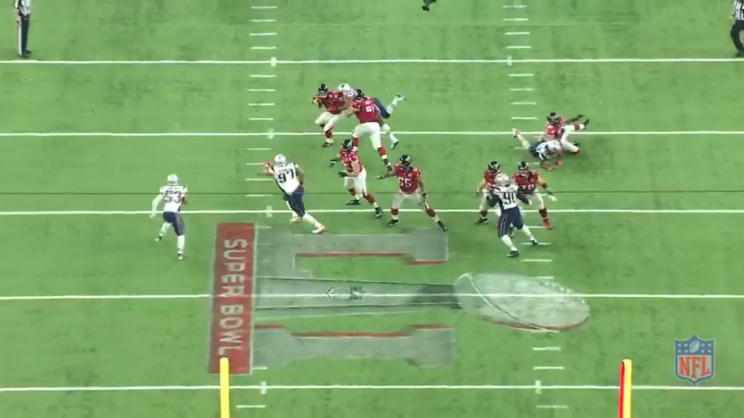
The Patriots were excellent in their comeback. You’ll hear often about a team making adjustments during a game, without anyone explaining specifically what the adjustments were. When you study the film of Super Bowl LI, the Patriots’ two biggest offensive adjustments are clear, and to understand them we have to take a look at what worked early for the Falcons’ defense.
Early in the game, the Falcons had man concepts with wrinkles put in specifically for the Patriots. In particular, they used “1 robber” a lot. That’s a man defense, and the “robber” is a free defender taking away inside routes. They’d often use the robber to focus on slot receiver Julian Edelman, who is great on crossing routes. On a play in the second quarter, Edelman ran a shallow cross, safety Keanu Neal (the robber before the snap) jumped Edelman’s route and Robert Alford became the robber. It was a great concept to have Neal and Alford switch – it was a better plan than chasing Edelman on his staple crossing routes. Brady didn’t read the switch and he threw right into Alford’s robber area to Amendola in the middle. Brady was lucky it wasn’t intercepted.
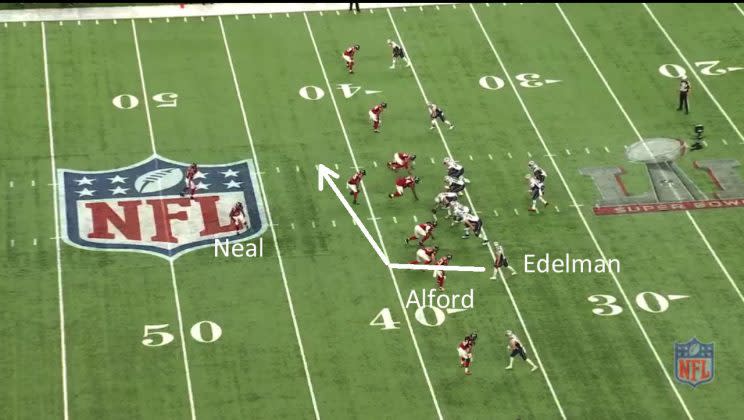
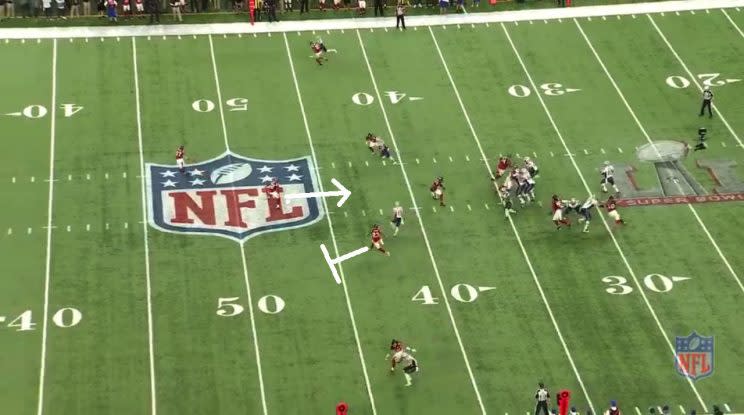

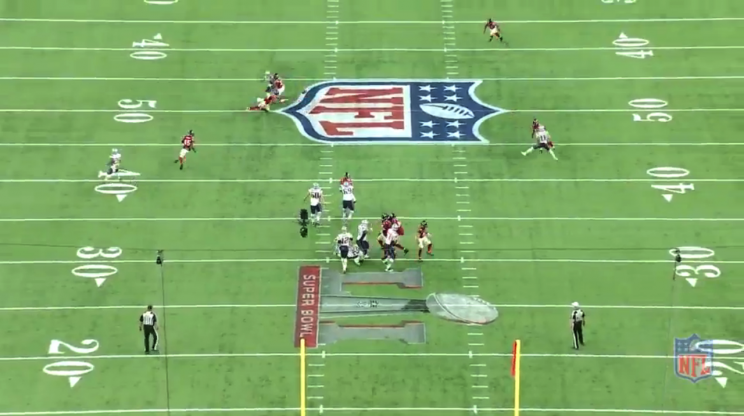
Brady wasn’t so lucky later in that drive. Again, the Falcons used “1 robber” with Neal as the robber. Edelman ran another shallow cross underneath Martellus Bennett’s natural pick. Instead of Alford trying to get over the top and running with Edelman, Neal jumped Edelman to take away the throw. Alford became the free robber, and Brady didn’t recognize the switch as he was under pressure from Dwight Freeney. Brady threw to Amendola and Alford was sitting on it, and returned it for an 82-yard interception. There’s a reason Brady looked like he never saw Alford; it was a creative wrinkle by the Falcons to switch in their “1 robber” look when Edelman went across the middle. Freeney pressure also forced a quick throw without a defined read of the coverage.
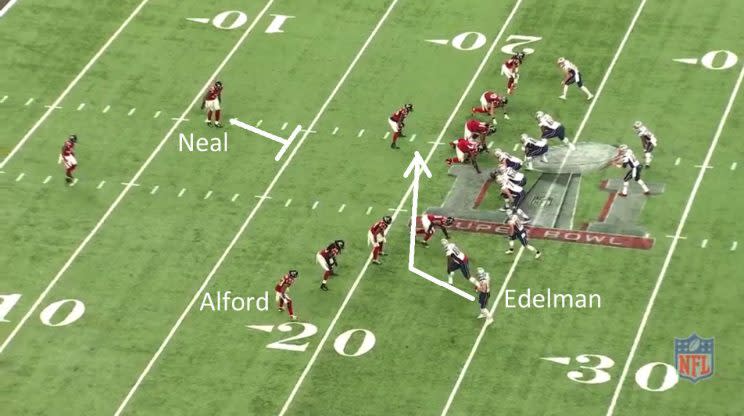
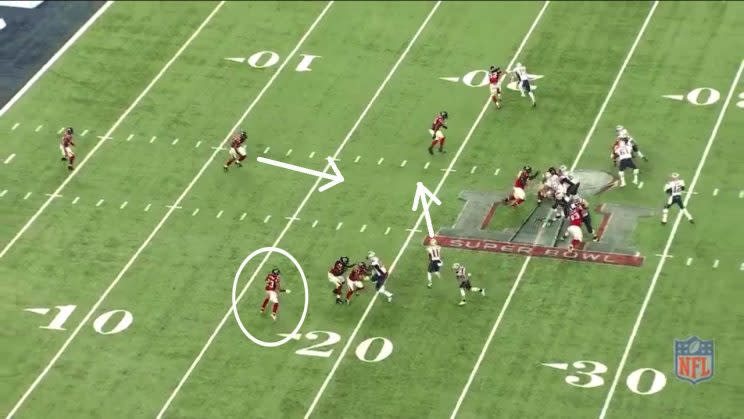
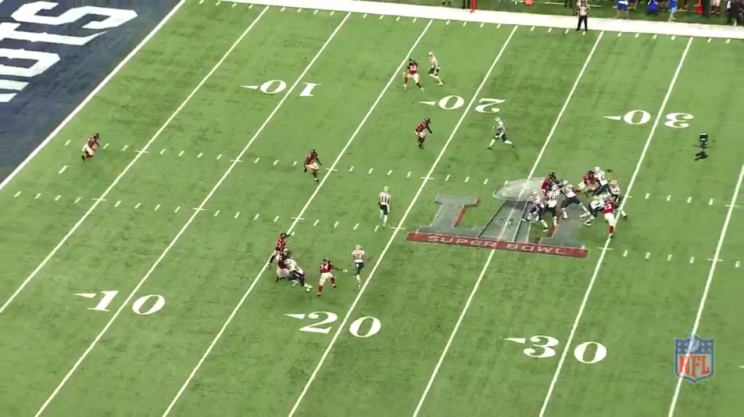
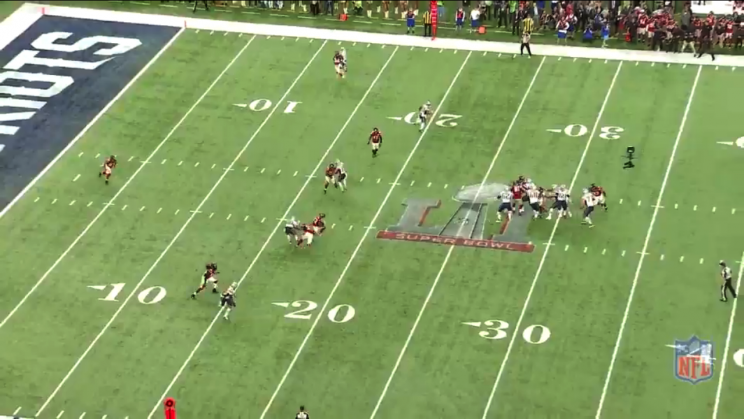
Here’s where the Patriots made two key adjustments. They started using a back or tight end to start chipping Freeney, helping tackle Nate Solder (who had problems blocking Freeney one-on-one). That gave Brady more time in the pocket. Then the Patriots started relying on outside routes, realizing the Falcons were using “Cover 1” and “1 robber” to take away the middle. That was critical for the rest of the game.
On fourth-and-3 after the Falcons took a 28-3 lead, Atlanta played “cover 1” man coverage with linebackers Deion Jones and De’Vondre Campbell as free lurk defenders in the middle. Amendola ran an out route, Brian Poole missed a tackle and Amendola got 17 yards. What’s important here is Amendola worked to the outside, away from the lurk/robber defenders. That was a theme in the second half.
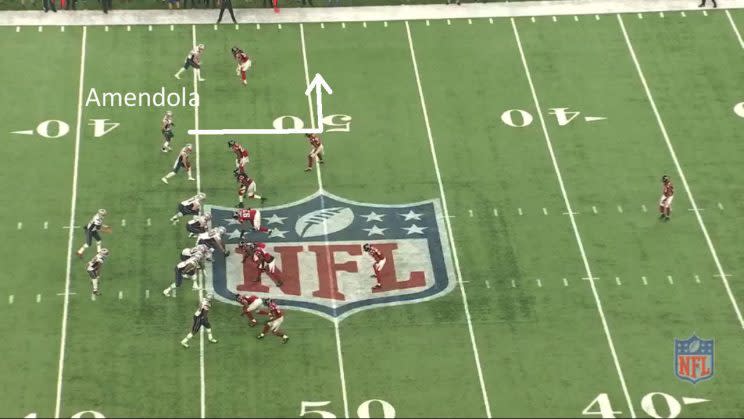
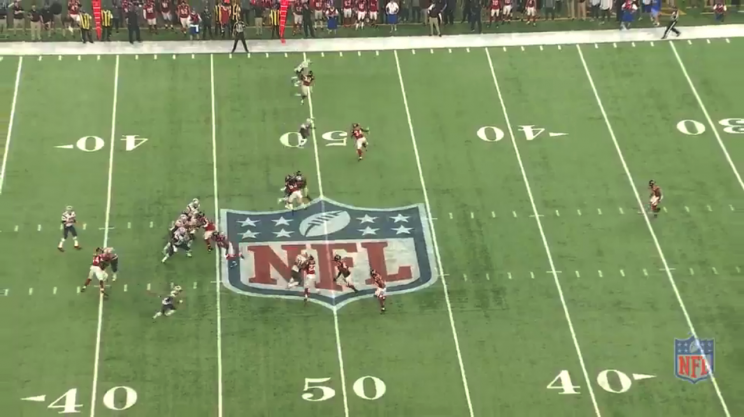
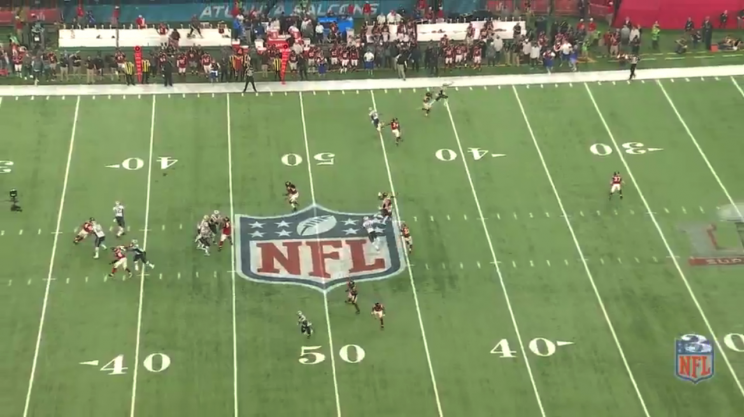
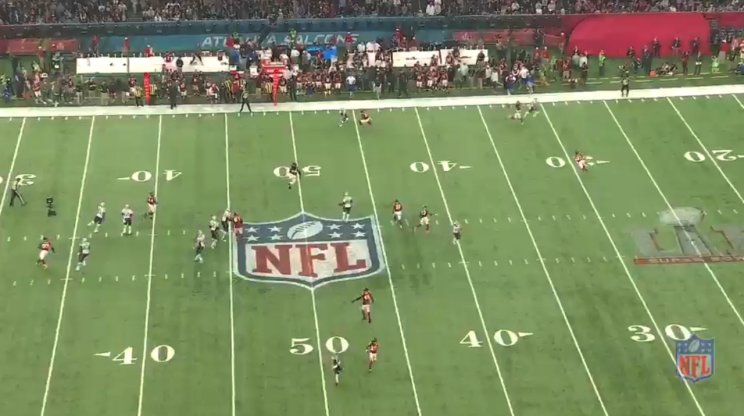
There were many examples of Brady working the outside of the field in the second half and overtime, beating the Falcons’ key defensive wrinkle that was so successful in the first half. Here’s another key example: On third-and-11, with the Patriots trailing 28-12 and 7:03 left, the Falcons went to “1 robber” again and Brady threw outside the numbers to Malcolm Mitchell for 12 yards. They beat the man coverage with excellent execution (Brady had several key throws in overtime against man coverage on the Patriots’ game-winning drive, as well).

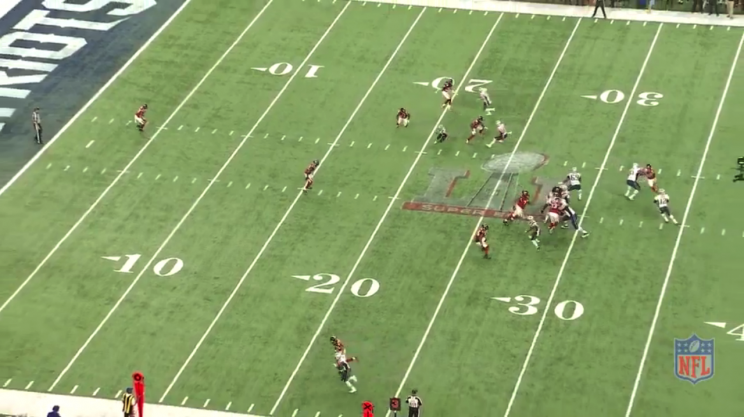
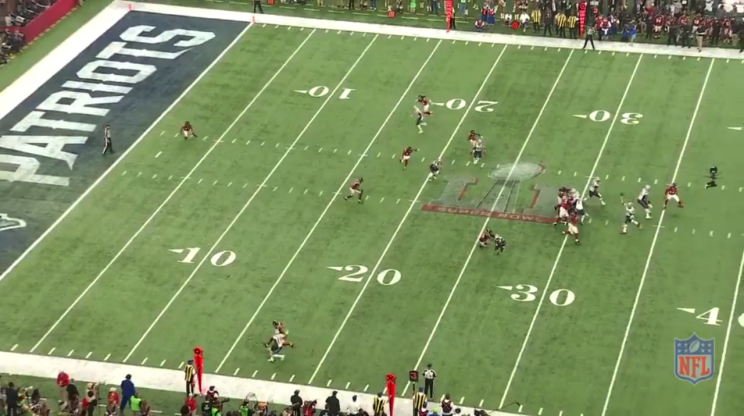

As big as Hightower’s play was, a play I think might have actually been the biggest in the game came with 3:17 remaining. The Patriots faced third-and-10. The Falcons blitzed off the edge and played “Cover 3” zone behind it. Brady made a big-time anticipation throw to Chris Hogan on an out route from the slot, right behind the blitz. Brady starts throwing just as Hogan starts to break outside. If Brady threw a beat later, and outside cornerback Jalen Collins would have been able to make a play. The pocket closed relatively quickly around Brady, but he delivered a strike for 16 yards.
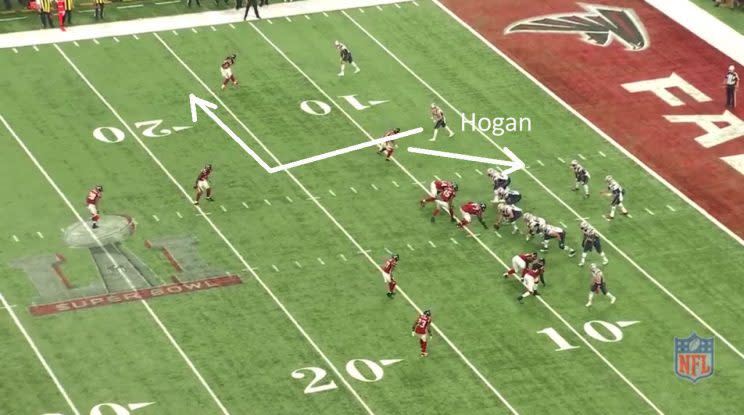

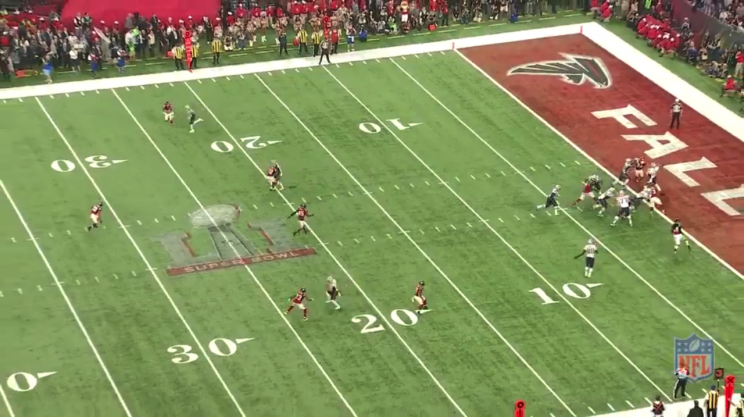
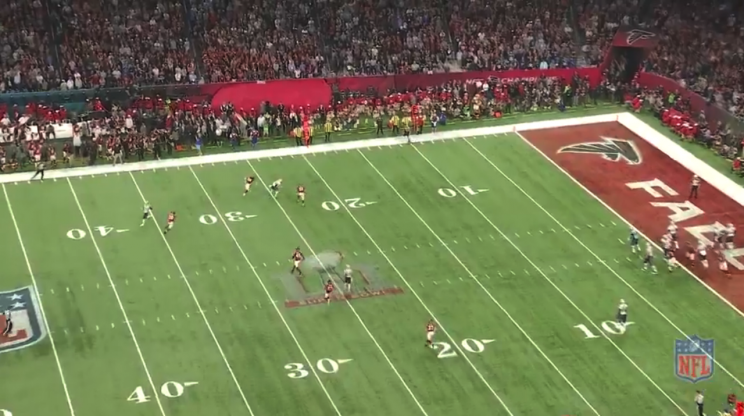
This was a fascinating game from an Xs and Os standpoint. The Falcons had a very good game plan, and the Patriots made some important adjustments on both sides of the ball that allowed them to get back in the game. In the end, the Patriots’ coaching and execution led to one of the most memorable comebacks in NFL history.
– – – – – – –
NFL analyst and NFL Films senior producer Greg Cosell watches as much NFL game film as anyone. Throughout the season, Cosell will join Shutdown Corner to share his observations on the teams, schemes and personnel from around the league.


